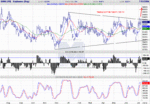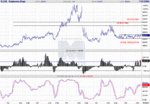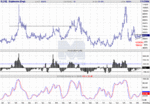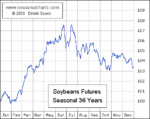Attention grain/Soybeans traders -
There is an expansive HEATWAVE forecast to come later this week (ending Jul 14th 2006) for much of the US - including the Corn Belt and eastern US, eventually.
This will, if it comes to pass, probably produce a good powerful rally in the Corn and Beans.
I like the Soybeans myself - the techncials look VERY promising for a strong breakout NORTH any time now. This pending heatwave gives me the POSSIBLE fundamental back-up to what I see in the technical picture.
I am LONG November Soybeans right now (from 631). Targeting 710 (NOV) later this summer, or early 'fall'. Could be a very good POSITION trade to hold through July and August.
We'll see.
Here are my charts:
1) November Soybeans Daily:
2) SOybeans Weekly
3) Soybeans Monthly.
There is an expansive HEATWAVE forecast to come later this week (ending Jul 14th 2006) for much of the US - including the Corn Belt and eastern US, eventually.
This will, if it comes to pass, probably produce a good powerful rally in the Corn and Beans.
I like the Soybeans myself - the techncials look VERY promising for a strong breakout NORTH any time now. This pending heatwave gives me the POSSIBLE fundamental back-up to what I see in the technical picture.
I am LONG November Soybeans right now (from 631). Targeting 710 (NOV) later this summer, or early 'fall'. Could be a very good POSITION trade to hold through July and August.
We'll see.
Here are my charts:
1) November Soybeans Daily:
2) SOybeans Weekly
3) Soybeans Monthly.





